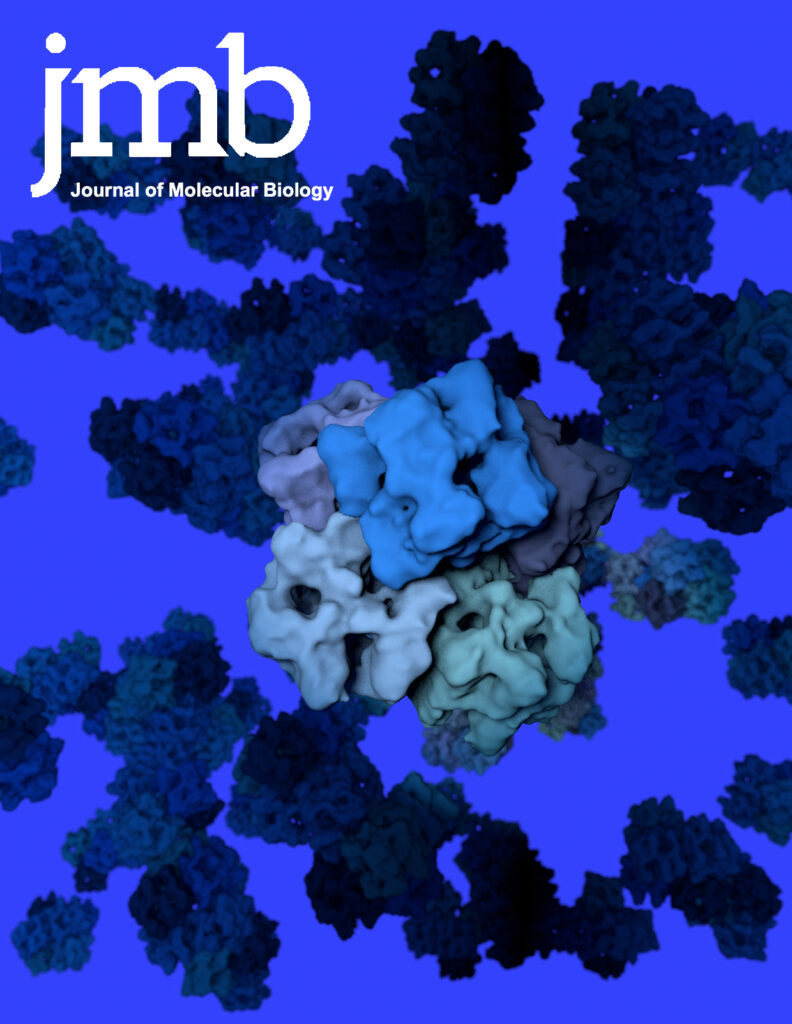
Jürgen Mark, Arne Moeller, Andreas G. Martin, Judith Rheinbay, Wolfgang Gebauer, Frank Depoix
Oxygen transport in Myriapoda is maintained by a unique 6 × 6mer hemocyanin, that is, 36 subunits arranged as six hexamers (1 × 6mers). In the sluggish diplopod Spirostreptus, the 1 × 6mers seem to operate as almost or fully independent allosteric units (h ∼ 1.3; P50 ∼ 5 torr), whereas in the swift centipede Scutigera, they intensively cooperate allosterically (h ∼ 10; P50 ∼ 50 torr). Here, we show the chemomechanical basis of this differential behavior as deduced from hybrid 6 × 6mer structures, obtained by single-particle cryo-electron microscopy of the Scutigera 6 × 6mer (10.0 Å resolution according to the 0.5 criterion) and docking of homology-modeled subunits from Scutigera and two diplopods, Spirostreptus and Polydesmus. The Scutigera 6 × 6mer hemocyanin is a trigonal antiprism assembled from six smaller trigonal antiprisms (1 × 6mers), thereby exhibiting D3 point group symmetry. It can be described as two staggered 3 × 6mers or three oblique 2 × 6mers. Topologically, the 6 × 6mer is subdivided into six subunit zones, thereby exhibiting a mantle (24 subunits) and a core (12 subunits). The six hexamers are linked by 21 bridges, subdivided into five types: two within each 3 × 6mer and three between both 3 × 6mers. The molecular models of the 6 × 6mer reveal intriguing amino acid appositions at these inter-hexamer interfaces. Besides opportunities for salt bridges, we found pairs of carboxylate residues for possible bridging via a Ca2+ or Mg2+ ion. Moreover, we detected histidine clusters, notably in Scutigera, allowing us to advance hypotheses as to how the hexamers are allosterically coupled in centipede hemocyanin and why they act more independently in diplopod hemocyanin.
DOI: 10.1016/j.jmb.2009.06.082
PMID: 19591844